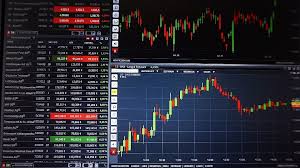
Forex trading can be an exciting and profitable venture, but success requires a solid understanding of trading strategies. The foreign exchange market is known for its high volatility and liquidity, making it both a challenging and rewarding environment for traders. In this article, we will examine some of the most effective forex trading strategies, providing you with valuable insights to help you navigate the market successfully. For a detailed guide on forex trading strategies, you can visit forex trading strategies https://ex-zar.com/. Let’s dive into some key strategies that can help elevate your trading game.
1. Trend Following Strategy
The trend following strategy is one of the most popular approaches among forex traders. It is based on the idea that prices tend to move in trends, and traders aim to capitalize on these movements. The basic premise is to buy when the market is in an uptrend and sell when it is in a downtrend. To identify trends, traders often use technical indicators such as moving averages, Relative Strength Index (RSI), and trendlines. One of the simplest methods to implement this strategy is using the 50-day and 200-day moving averages. A buy signal is generated when the 50-day moving average crosses above the 200-day moving average, indicating a potential uptrend.
2. Breakout Trading
Breakout trading is another popular strategy that involves entering a trade when the price breaks through a significant support or resistance level. Traders employ this technique by identifying key levels where the price has historically struggled to break through. Once the price breaks and closes beyond these levels, it often leads to substantial price movements. Traders can use stop-loss orders just below the breakout point for a long position or above it for a short position, allowing for a favorable risk-to-reward ratio. Breakouts can be identified using various tools, including trendlines, pivot points, and chart patterns.
3. Scalping Strategy
Scalping is a short-term trading strategy that aims to make small profits from minor price fluctuations. Scalpers typically hold their positions for a few seconds to a few minutes, making multiple trades throughout the day. This strategy requires a keen eye for market movements and quick decision-making. To successfully implement a scalping strategy, traders often utilize high leverage and focus on currency pairs with high liquidity and low spreads. Additionally, effective risk management is crucial, as a series of small losses can quickly erode profits.
4. Swing Trading

For those who prefer a medium-term strategy, swing trading may be the right choice. Swing traders aim to capture short- to medium-term price movements by holding positions for several days or weeks. This strategy relies on technical analysis to identify potential reversals and market swings. Swing traders often use chart patterns, Fibonacci retracements, and momentum indicators to make informed trading decisions. As with all trading strategies, effective risk management and discipline are vital for long-term success.
5. Range Trading
Range trading is a strategy that exploits the price fluctuations between established support and resistance levels. Traders using this strategy will buy when the price approaches the support level and sell when it nears the resistance level. This approach assumes that the price will continue to oscillate between these levels until a breakout occurs. Range trading works best in sideways markets, and it is essential to have a good understanding of price action and the ability to spot key support and resistance levels. Utilizing oscillators such as the RSI or Stochastic can assist in making trading decisions in range-bound markets.
6. Position Trading
Position trading is a long-term strategy where traders hold their positions for weeks, months, or even years. This approach requires a sound understanding of fundamental analysis, as traders look for trends in economic indicators, geopolitical events, and overall market sentiment. Position traders typically use weekly and monthly charts to identify long-term trends and entry points. While position trading involves fewer trades compared to other strategies, it requires patience and a strong resilience to market fluctuations. Risk management is crucial, as longer holding periods expose traders to greater market movements.
7. News Trading
News trading is a strategy centered around the market’s reaction to economic events and news releases. Forex markets are highly sensitive to news, and traders can capitalize on the volatility that often follows significant announcements such as employment reports, interest rate changes, and geopolitical developments. Successful news trading requires awareness of the economic calendar and the ability to interpret how news events impact currency prices. Traders must also be prepared for sharp price movements and the potential for slippage during high-impact news releases.
Conclusion
Successful forex trading is a combination of utilizing effective trading strategies, managing risk, and understanding market dynamics. Each strategy has its advantages and drawbacks, making it essential for traders to choose one that aligns with their risk tolerance, time commitment, and trading style. Continuous education and practice are crucial, as mastery of these strategies can significantly enhance your trading performance. Remember that consistency and discipline play a pivotal role in achieving long-term success in the forex market. By implementing these strategies and adapting them to your unique trading approach, you can work toward achieving your financial goals in forex trading.